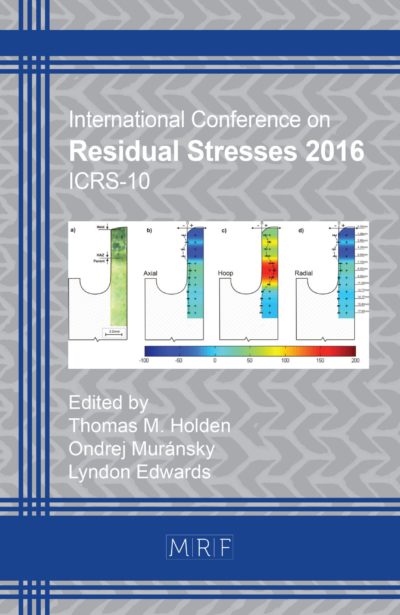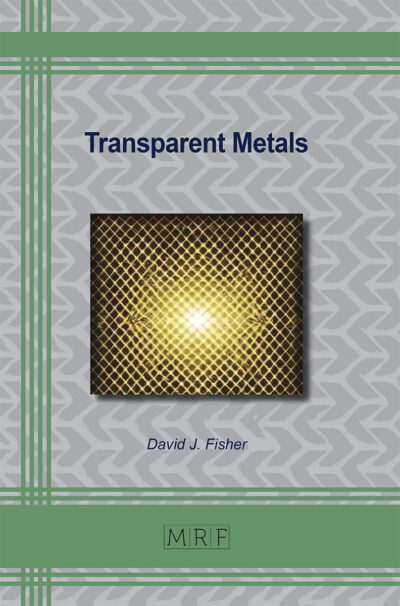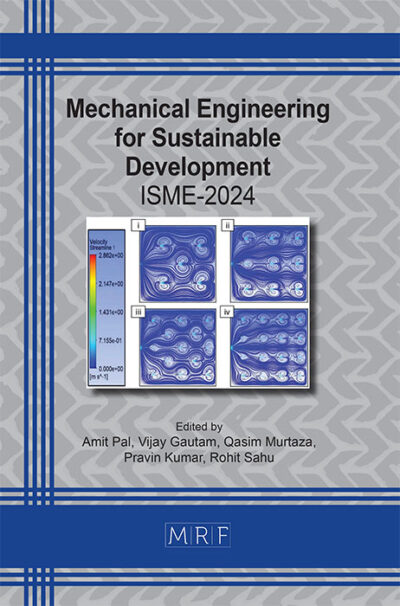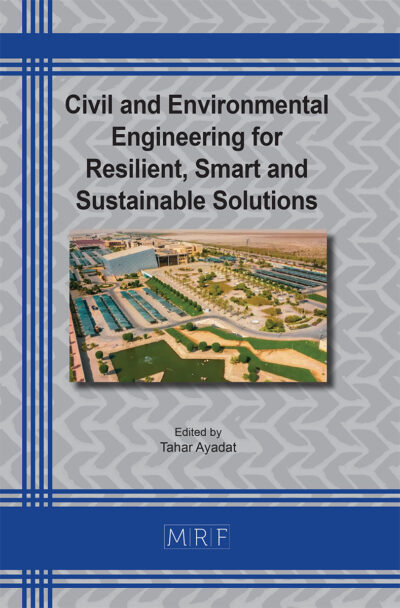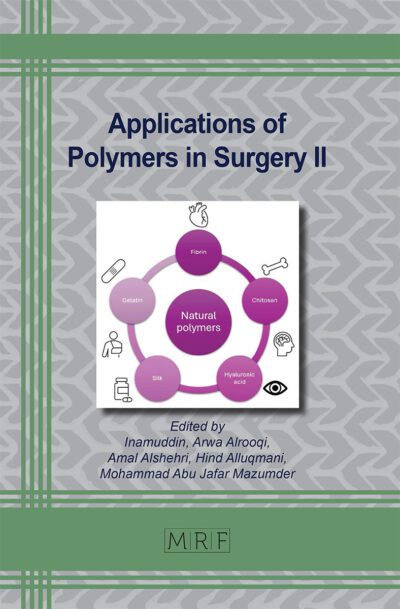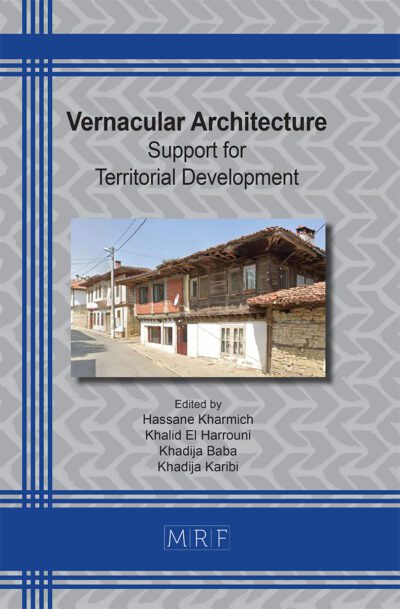Mechanical characterization of lightweight expanded clay particles
Ben Jamaa Haithem, Elghezal Latifa, Jamei Mehrez
Abstract. The objective of the research is to study the mechanical behavior of crushable particles containing an internal porosity. To ease the visualization of grains’ crushing, expanded clay aggregates (LECA) was selected as a model material due to the brittle behavior of its particles and its high internal porosity. Identification of LECA’s physical properties through single grain uniaxial compression tests made it possible to understand the parameters affecting the fragmentation phenomenon. The effect of particle’s dimension was studied by a statistical modeling of the uniaxial compression test results. Results showed a high dependency on both grain ‘s dimension and its internal porosity.
Keywords
Granular Materials, Expanded Clay, Uniaxial Compression Test, Particle Crushing
Published online 2/25/2025, 10 pages
Copyright © 2025 by the author(s)
Published under license by Materials Research Forum LLC., Millersville PA, USA
Citation: Ben Jamaa Haithem, Elghezal Latifa, Jamei Mehrez, Mechanical characterization of lightweight expanded clay particles, Materials Research Proceedings, Vol. 48, pp 428-437, 2025
DOI: https://doi.org/10.21741/9781644903414-47
The article was published as article 47 of the book Civil and Environmental Engineering for Resilient, Smart and Sustainable Solutions
![]() Content from this work may be used under the terms of the Creative Commons Attribution 3.0 license. Any further distribution of this work must maintain attribution to the author(s) and the title of the work, journal citation and DOI.
Content from this work may be used under the terms of the Creative Commons Attribution 3.0 license. Any further distribution of this work must maintain attribution to the author(s) and the title of the work, journal citation and DOI.
References
[1] AF. Casini, G.M.B. Viggiani, S.M. Springman, Breakage of an artificial crushable material under loading, Granul. Matter. 15 (2013) 661–673. https://doi.org/10.1007/s10035-013-0432-x
[2] Lotfy, A., Hossain, K. M. A., & Lachemi, M. (2015). Mix design and properties of lightweight self-consolidating concretes developed with furnace slag, expanded clay and expanded shale aggregates. Journal of Sustainable Cement-Based Materials, 5(5), 297–323. https://doi.org/10.1080/21650373.2015.1091999
[3] S. Saride, A.J. Puppala, R. Williammee, S.K. Sirigiripet, Use of lightweight ECS as a fill material to control approach embankment settlements, J. Mater. Civ. Eng. 22 (2009) 607–617. https://doi.org/10.1061/(ASCE)MT.1943-5533.0000060
[4] A.J. Puppala, S. Saride, R. V Yenigalla, B.C.S. Chittoori, E. Archeewa, Long-Term Performance of a Highway Embankment Built with Lightweight Aggregates, J. Perform. Constr. Facil. 31 (2017). https://doi.org/10.1061/(ASCE)CF.1943-5509.0001043
[5] N. Salem, M. Ltifi, H. Hassis, Mechanical and durability study of Tunisian calcined clay in lightweight concrete of expanded clay, Eur. J. Environ. Civ. Eng. (2019). https://doi.org/10.1080/19648189.2019.1624625
[6] C. Woitzik, A. Düster, Modelling the material parameter distribution of expanded granules, Granul. Matter. 19 (2017) 52. https://doi.org/10.1007/s10035-017-0735-4
[7] A. Ozguven, L. Gunduz, Examination of effective parameters for the production of expanded clay aggregate, Cem. Concr. Compos. 34 (2012) 781–787. https://doi.org/10.1016/j.cemconcomp.2012.02.007
[8] N. Salem, M. Ltifi, H. Hassis, Characterisation of lightweight concrete of Tunisian expanded clay: mechanical and durability study, Eur. J. Environ. Civ. Eng. 21 (2017) 670–695. https://doi.org/10.1080/19648189.2016.1150893
[9] S.J. Hayde, Method of burning argillaceous material and product resulting therefrom, 1920. https://patents.google.com/patent/US1707395
[10] G. Han, M.B. Dusseault, Description of fluid flow around a wellbore with stress-dependent porosity and permeability, J. Pet. Sci. Eng. (2003). https://doi.org/10.1016/S0920-4105(03)00047-0
[11] D White, D.J. and Bolton, M.D. (2002) Observing friction fatigue on a jacked pile. Springman, S. (ed.) In Proceedings of the Workshop on Constitutive and Centrifuge Modelling: Two Extremes. CRC Press / Balkema. pp. 347-354. URI: http://eprints.soton.ac.uk/id/eprint/424502
[12] M. Zeghal, The impact of grain crushing on road performance, Geotech. Geol. Eng. (2009). https://doi.org/10.1007/s10706-009-9256-1
[13] M. Jamei, H. Guiras, Y. Chtourou, A. Kallel, E. Romero, I. Georgopoulos, Water retention properties of perlite as a material with crushable soft particles, Eng. Geol. 122 (2011) 261–271. https://doi.org/10.1016/j.enggeo.2011.06.005
[14] J. Lackenby, B. Indraratna, G. McDowell, D. Christie, Effect of confining pressure on ballast degradation and deformation under cyclic triaxial loading, Géotechnique. 57 (2007) 527–536. https://doi.org/10.1680/geot.2007.57.6.527
[15] L. LUZZANI, M.R. Coop, On the Relationship between Particle Breakage and the Critical State of Sands., {SOILS} {AND} {FOUNDATIONS}. 42 (2002) 71–82. https://doi.org/10.3208/sandf.42.2_71
[16] G.R. McDowell, M.D. Bolton, On the micromechanics of crushable aggregates, Geotechnique. 48 (1998) 667–679. https://doi.org/10.1680/geot.1998.48.5.667
[17] Y. NAKATA, Y. KATO, M. HYODO, A.F.L. HYDE, H. MURATA, {One}-Dimensional Compression Behaviour of Unuformly Granded Sand Related to Single Particle Crushing Strength., {SOILS} {AND} {FOUNDATIONS}. 41 (2001) 39–51. https://doi.org/10.3208/sandf.41.2_39$
[18] Y. Rozenblat, D. Portnikov, A. Levy, H. Kalman, S. Aman, J. Tomas, Strength distribution of particles under compression, Powder Technol. 208 (2011) 215–224. https://doi.org/10.1016/j.powtec.2010.12.023
[19] D. Portnikov, H. Kalman, S. Aman, J. Tomas, Investigating the testing procedure limits for measuring particle strength distribution, Powder Technol. (2013). https://doi.org/10.1016/j.powtec.2012.12.025
[20] M.M. Hagerty, D.R. Hite, C.R. Ullrich, D.J. Hagerty, One‐Dimensional High‐Pressure Compression of Granular Media, J. Geotech. Eng. 119 (1993) 1–18. https://doi.org/10.1061/(ASCE)0733-9410(1993)119:1(1)
[21] P. V Lade, J.A. Yamamuro, P.A. Bopp, Significance of particle crushing in granular materials, J. Geotech. Eng. 122 (1996) 309–316. https://doi.org/10.1061/(asce)0733-9410(1996)122:4(309)
[22] K.D. Kafui, C. Thornton, Numerical simulations of impact breakage of a spherical crystalline agglomerate, Powder Technol. 109 (2000) 113–132. https://doi.org/10.1016/s0032-5910(99)00231-4
[23] S. Eckhard, M. Fries, U. Teipel, S. Antonyuk, S. Heinrich, Modification of the mechanical granule properties via internal structure, Powder Technol. 258 (2014) 252–264. https://doi.org/10.1016/j.powtec.2014.03.016
[24] B.O. Hardin, Crushing of soil particles, J. Geotech. Eng. 111 (1985) 1177–1192. https://doi.org/10.1061/(asce)0733-9410(1985)111:10(1177)
[25] C. Wang, Y. Cheng, X. He, M. Yi, Z. Wang, Size effect on uniaxial compressive strength of single coal particle under different failure conditions, Powder Technol. (2019). https://doi.org/10.1016/j.powtec.2019.01.017
[26] Y.P. Cheng, Y. Nakata, M.D. Bolton, Discrete element simulation of crushable soil, Geotechnique. 53 (2003) 633–642. https://doi.org/10.1680/geot.2003.53.7.633
[27] C. Liu, H. Wan, L. Wang, Effect of movement direction on resistance force in granular media, Powder Technol. (2019). https://doi.org/10.1016/j.powtec.2018.12.023.
[28] J. Feda, Physical models of soil behaviour, Eng. Geol. 72 (2004) 121–129. https://doi.org/10.1016/j.enggeo.2003.07.003
[29] L. Elghezal, M. Jamei, I.-O. Georgopoulos, DEM simulations of stiff and soft materials with crushable particles: an application of expanded perlite as a soft granular material, Granul. Matter. 15 (2013) 685–704. https://doi.org/10.1007/s10035-013-0406-z
[30] AFNOR, Determination of shrinkage characteristic on remoulded soil passing a 400 micrometers test sieve., (1997).
[31] H. Ben Jamaa, L. Elghezal, M. Jamei, Micro-mechanical properties of expanded clay particles, Int. J. Innov. Technol. Explor. Eng. 8 (2019) 840–844. https://www.ijitee.org/wp-content/uploads/papers/v8i11/K15010981119.pdf
[32] B.M. Das, Principles of Foundation Engineering, Cengage Learning, 2010. https://books.google.tn/books?id=v3Mq9szzE1YC
[33] I. Stefanou, J. Sulem, Existence of a threshold for brittle grains crushing strength: two-versus three-parameter Weibull distribution fitting, Granul. Matter. 18 (2016). https://doi.org/10.1007/s10035-015-0603-z
[34] Y.D. Zhang, G. Buscarnera, I. Einav, Grain size dependence of yielding in granular soils interpreted using fracture mechanics, breakage mechanics and Weibull statistics, Géotechnique. 66 (2016) 149–160. https://doi.org/10.1680/jgeot.15.p.119
[35] C. Subero-Couroyer, M. Ghadiri, N. Brunard, F. Kolenda, Weibull analysis of quasi-static crushing strength of catalyst particles, Chem. Eng. Res. Des. 81 (2003) 953–962. https://doi.org/10.1205/026387603322482194
[36] H. Ben Jamaa, L. Elghezal, M. Jamei, The oedometric compression behavior of expanded clay including the crushability of single particles, Granul. Matter. 22 (2020). https://doi.org/10.1007/s10035-019-0994-3
[37] N. V. Silva, S.C. Angulo, A.S.R. Barbosa, D.A. Lange, L.M. Tavares, Improved method to measure the strength and elastic modulus of single aggregate particles, Mater. Struct. Constr. (2019). https://doi.org/10.1617/s11527-019-1380-7
[38] S.C. Angulo, N. V. Silva, D.A. Lange, L.M. Tavares, Probability distributions of mechanical properties of natural aggregates using a simple method, Constr. Build. Mater. (2020). https://doi.org/10.1016/j.conbuildmat.2019.117269
[39] D. Portnikov, H. Kalman, Determination of elastic properties of particles using single particle compression test, Powder Technol. 268 (2014) 244–252. https://doi.org/10.1016/j.powtec.2014.08.011


